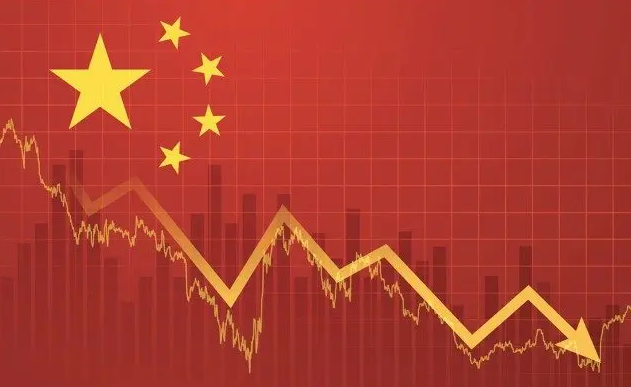Is China's economy heading for a recession?

China's economy stumbled in May as industrial production and retail sales growth mismatched, fueling expectations that Beijing will need to do more to shore up a shaky post-pandemic recovery.
The economic recovery seen earlier this year faltered in the second quarter, prompting China's central bank to cut some key interest rates this week, expecting further continuation.
Industrial production rose 3.5% year-over-year in May, the National Bureau of Statistics (NBS) said on Thursday, slower than April's 5.6% growth and slightly below the 3.6% growth analysts expected in a Reuters poll as manufacturers grapple with weak demand at home and abroad.
Retail sales, a key indicator of consumer confidence, rose 12.7%, falling short of 13.6% growth forecasts and down from 18.4% in April.
“All the data so far has sent consistent signals that the economic momentum is waning,” said Zhiwei Zhang, president of Pinpoint Asset Management.
Data ranging from business and trade surveys to growth in lending and home sales showed signs of weakness in the world's second-largest economy. According to NBS data, crude steel production continued to fall both year-on-year and monthly in May, while daily coal production also declined compared to April.
The soft data fell short of analysts' expectations of a sharper rise given the comparison to very weak performance last year when many cities were under strict COVID lockdowns.
The numbers also confirm the need for more stimulus as China faces deflationary risks, rising local government debt, record youth unemployment and weakening global demand.
“Insufficient domestic demand and sluggish external demand could cut short the momentum in the coming months, leaving China with a more gradual U-shaped recovery path on its month-on-month growth trajectory,” said Bruce Pang, chief economist at Jones Lang LaSalle.
The first step would be to introduce stimulus with large-scale policy easing, Pang said. "But it could take two to three years to support the slowing economic recovery."

Interest rate cuts
China's central bank cut the interest rate on its one-year medium-term credit facility on Thursday, the first such easing in 10 months, paving the way for a lower lending interest rate (LPR) next week.
The yuan hit a new six-month low after the rate cut, and Chinese stock markets rose, with the core CSI 300 index gaining 0.6% and Hong Kong's Hang Seng index climbing 1.2%.
Markets are also betting on additional stimulus, including measures aimed at the volatile real estate sector, which was once a key driver of growth.
While policymakers in Beijing are wary of aggressive stimulus that could increase the risk of capital outflows, analysts say more easing is needed.
The country's largest banks have recently cut deposit rates to ease pressure on profit margins and encourage savers to spend more.
Julian Evans-Pritchard, head of China at Capital Economics, said that while central bank easing won't make much of a difference on its own, it is indicative of "growing concerns among officials about the health of China's recovery."
He added that the second quarter promises to be weaker than he expected, and more political support is likely to be needed to prevent a resumption of the economic downturn.
NBS spokesman Fu Linghui said at a press briefing that growth in the second quarter is expected to accelerate due to last year's low base effect.
However, he warned that the recovery is facing challenges, including a "complex and bleak international environment, a sluggish global economic recovery" and "insufficient domestic demand."
And Gang, the governor of the PBOC, promised last week that China would make countercyclical adjustments to support the economy.
Real estate investment fell at its fastest pace since at least 2001 in May, down 21.5% year on year, while new home price growth slowed.
Analysts at Goldman Sachs said this week that the real estate sector, which has historically been a major driver of China's economic growth, is expected to struggle with "persistent weakness" for years.
Private fixed investment fell 0.1% in the first five months, in stark contrast to an 8.4% increase in public sector investment, suggesting weak business confidence.
Labor market problems continued, with youth unemployment jumping to a record 20.8%. The nationwide unemployment rate, based on polls, remained at 5.2% in May.




















